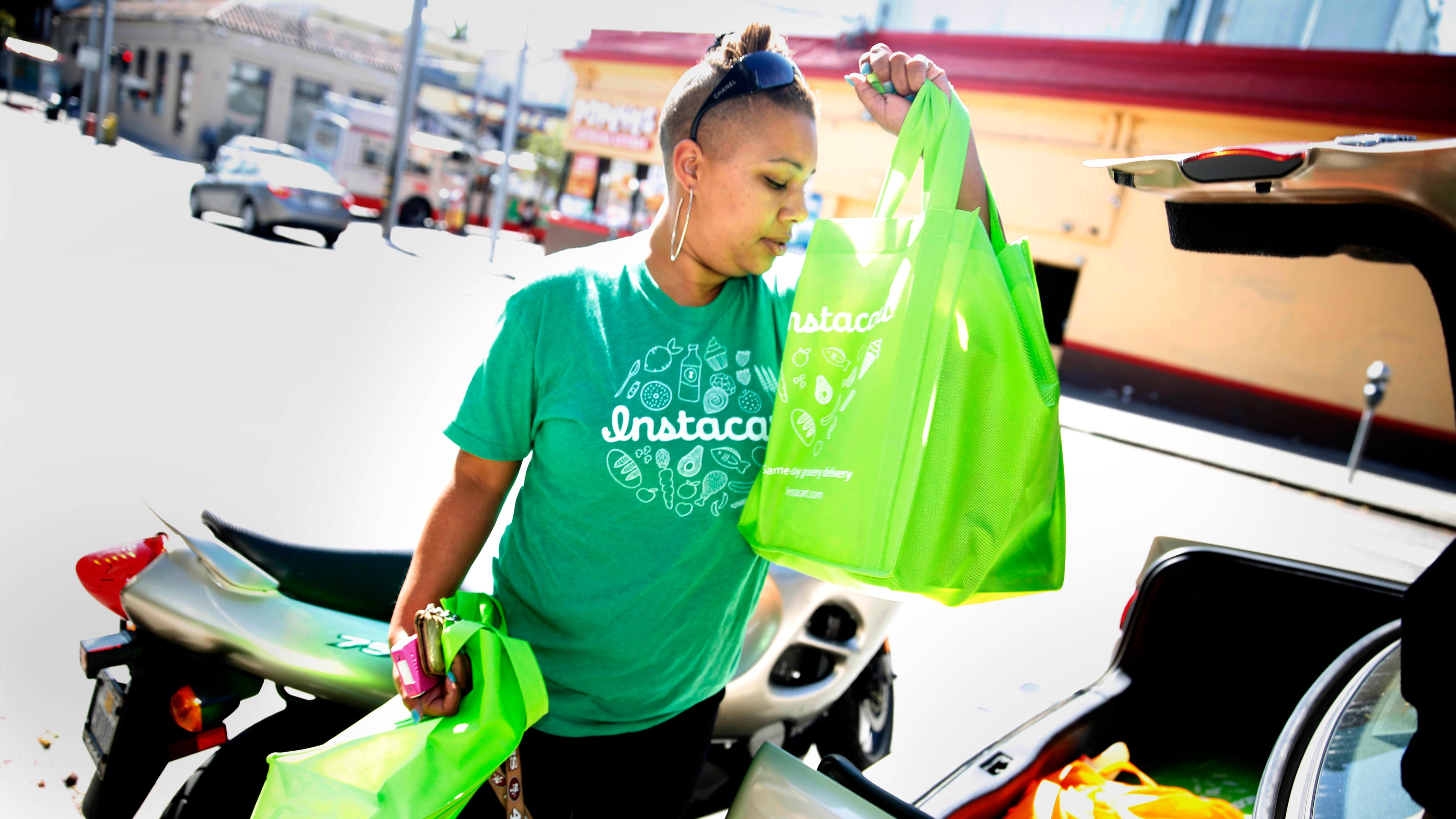How Can Instacart Drivers Keep Up With These Gas Prices?
A new fuel surcharge on grocery orders feels like a half-hearted measure.
All the extra little fees and surcharges we encounter in our daily lives can sometimes feel like a thousand tiny paper cuts. And now, rising gas prices might bring a new set of them. The Verge reports that Instacart will be adding a temporary surcharge to customer orders in order to counteract rising gas prices for the shoppers who fulfill our orders. While this might be a well-intentioned move in the interest of retaining gig workers, it comes off as half-hearted and may steer both customers and Instacart shoppers away from the delivery service.
Can Instacart’s fuel surcharge make a difference?
The extra 40 cents feels more like an empty gesture on Instacart's part, rather than a measure to actually assist the shopper-drivers that keep its business model running. CNN Business recently reported on Uber and Lyft's "cash back at the pump" promotions, which are similar to Instacart's fuel surcharge. Here's what one gig driver had to say:
Willy Solis, a gig worker based in Denton, Texas, said the various announcements are "designed in a way to make it sound like they're doing everything they can to take care of the drivers when in reality they're not."
Solis, who does gig work for Uber Eats, Instacart, Target-owned Shipt, Grubhub and DoorDash, said he's been working six days a week instead of his usual five in order to make up for the rising fuel costs. Solis said where he used to fill his tank for $20 to $30, he is now spending $40 to $50 to do so.
Knowing this—and knowing how many drivers split their time between working for Instacart versus other apps—that $0.40 seems even smaller.
Of course, Instacart feels differently. Tom Maguire, vice president of operations and care, said in the company's blog post that "every cent counts" and Instacart hopes this surcharge will help shoppers. But when gas prices are higher than they have been in 14 years, those 40 cents are a gesture that really just transfers the responsibility of paying gig workers a living wage from Instacart to Instacart customers. And when customers start seeing a longer and longer list of fees associated with home grocery delivery—and read more and more news stories about how so few of these fees benefit the workers themselves—they might find it easier to do curbside pickup at their local grocery store instead.
Other ways Instacart is trying to combat gas prices
Instacart also plans to work with GetUpside, an app that offers cash back on gas and other purchases, as another way to provide fuel assistance to its shoppers. However, since GetUpside can be used by both businesses and individuals, it's unclear how Instacart's involvement with the GetUpside app will benefit shoppers more, or differently, than if they had just signed up for it themselves.
CNN Business says that the partnership between Instacart and GetUpside will "layer on additional discounts," but offering these discounts at select locations again puts the burden on the driver to study up on the arbitrary benefits and take advantage of them. Instead, the solutions to assist drivers should be baked into the Instacart shopping experience from the start, without requiring the workers to "opt in" and do all the work of locating participating gas stations and retail outlets that offer deals.
If Instacart truly wants to help its drivers, it should fully commit to doing so. The company needs to be doing more to make "Instacart shopper" a sustainable and worthwhile gig, rather than shift the responsibility to customers, drivers, and third-party tech services.
